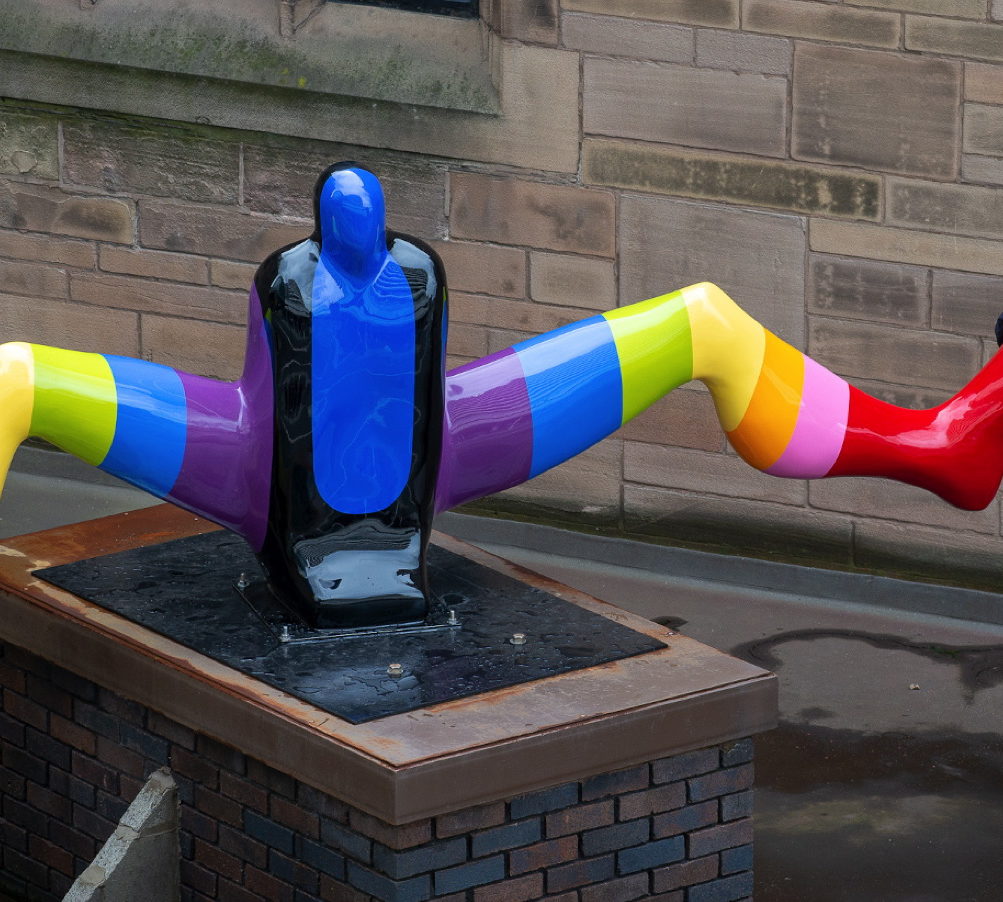Northern sculptors wanted for Liverpool Plinth
Lucy Byrne from Dot-art explains why public art can be so important
The next artist whose work is unveiled on the Liverpool Plinth will be its third. The sculptor, who may not even have responded to the callout for artists yet will, nonetheless, see their work on one of the most prominent sites for public art in the region, a previously empty platform on the side of Liverpool Parish Church (or St Nick’s, as it’s known), looking down towards the River Mersey. After Tony Heaton’s Gold Lamé and Sam Shendi’s Split Decisions (pictured), the new work will adorn the Liverpool Plinth for a year.
Liverpool takes its art seriously, as anyone who has been to the city during a Liverpool Biennial, or Independents Biennial, during LightNight or one of its regular cultural festivals can attest. Yet public art, and spaces for public art, can be few and far between. The Liverpool Plinth began as a partnership between Liverpool BID Company, Dot-art and Liverpool Parish Church, art and business coming together with an ambition to create a place for sculptor that one day could be as prominent as Trafalgar Square’s The Fourth Plinth.
A piece of public art can contribute in many different ways to a place.
There’s the aesthetic, it’s something good to look at, it can make you think, raise questions and ideas about modern life in the way art does. It can raise the profile of an artist. A prominent spot, having more people read about you, see your work, talk about you and know about you can have a positive impact on an artist’s career.
There’s also the impact a piece of public art has on the community around it. This might be creatives, businesses, bars, hotels, restaurants, companies and more. Public art attracts people to a place. It can help to tell the story of a place in a creative way, celebrating its history or diversity. Public art animates, improving a place and making it more attractive.
A permanent sculpture was the preferred choice of 64 per cent of people asked
Liverpool BID (Business Improvement District) Company undertook a survey in the city’s commercial district, asking people who work in its area if they wanted public art there. Sixty-three per cent did. A permanent sculpture was the preferred choice of 64 per cent of people asked, suggesting they wanted a piece of art that contributes to placemaking.
In Liverpool, a city with a lot of public art and striking architecture, new pieces of public art add a new layer to the city’s story. Newer artists get to rub their shoulders alongside older ones in the city’s skyline. Liverpool is a place that is always changing and developing, while art runs through it constantly, providing a focal point or a response.
The callout is open for a new work for the Liverpool Plinth. Any sculptor based in the north can submit existing work for consideration. The deadline is 22 March and the details can be found at dot-art.co.uk

Leave a reply
Your email address will not be published.